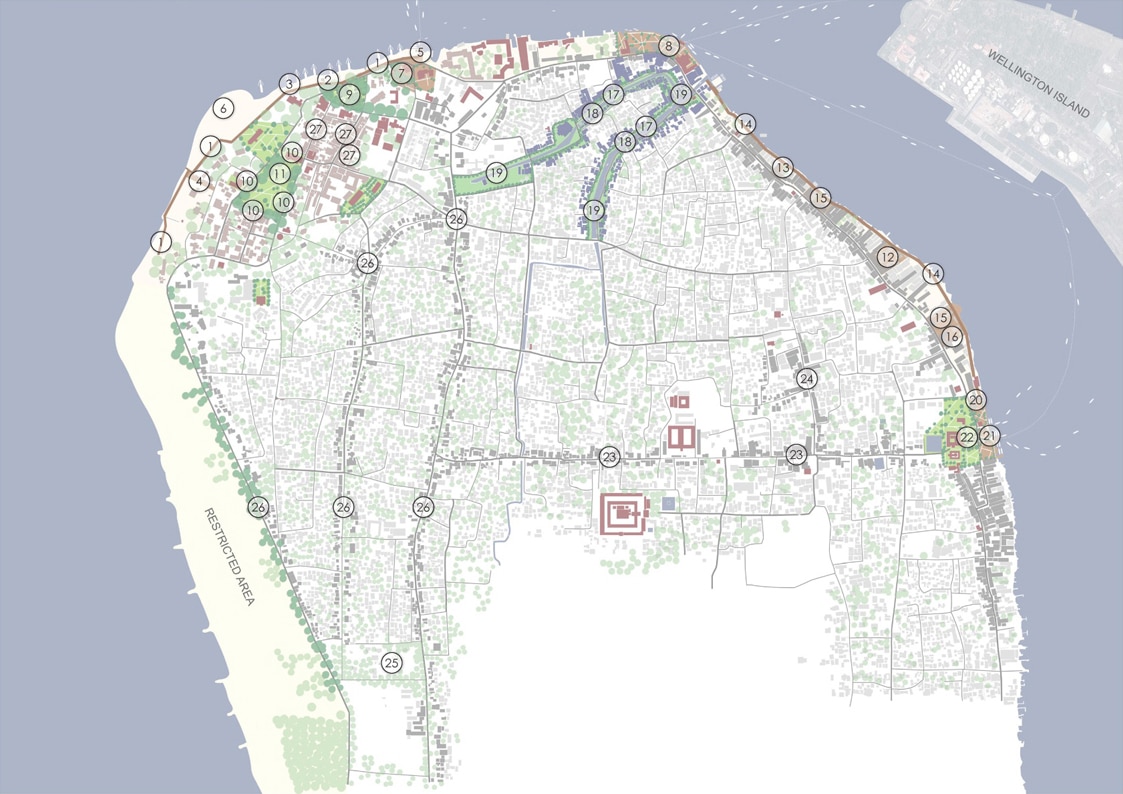
Department of Tourism, Government of Kerala is preparing a comprehensive vision and development plan for "30 years beyond today", for Fort Kochi in Ernakulam District. Fort Kochi, one of the earliest European settlements in India was inhabited by the Portuguese, the Dutch and the British who left behind a long lasting impression of their cultural signature. A Tourism Master plan has been developed for this area with the vision of making Fort Kochi a quality heritage and cultural town, and a visited sustainable and livable town. Potential intervention areas were identified through research and analysis which together form a complete tourist circuit containing all the heritage structures and places with historical significance. The idea is to develop this tourist circuit to enhance and improve tourism without disturbing the urban character and life of the residents around.
Size : 26.59 Sq.km
Services : Tourism Master planning, Urban Design, sustainability, Detailed Project Report (DPR)



Fort Kochi is a harbour and port city on the Arabian Sea in the southern Indian state of Kerala with a rich multi-cultural heritage from the colonial era, and may even date back as early as the 1st century AD. It was inhabited by the Portuguese, the French, the Dutch as well as the British, each of who have left their own indelible impressions on the town, in addition to being ruled by notable Indian kings before that. Having been subjected to callous neglect over the years, the potential of city and surrounding region remained untapped until a the Kerala State Tourism Department took up the project of developing it. The project constitutes a vision plan for 30 years and beyond,




The master plan for rejuvenating Fort Kochi and exploring its tourism potential prepared by the INI team after thorough research, studies and community consultations carried out in the region constitutes a list of micro projects pertaining to each unique precinct identified within it. Divided into three main zones where developmental works were planned to be carried out in a phased manner, the proposal covered the economic appraisal, implementation framework as well as the marketing plan for the same. Besides conserving the heritage structures and precincts and developing tourist infrastructure around them, the plan captures a vision for the sustainable growth of the city and region, as well as economic development of the locals.
The proposed development plan for Fort Kochi was envisioned in three main parts – the water edge, arrival nodes & street corridors, and heritage districts. The water edge development included the creation of a water-front promenade, restoration of heritage structures and conservation of the unique Chinese fishing nets along the promenade. Three main arrival nodes for tourists were identified for development at various locations around Cochin, and a number of historically and culturally prominent streets were identified to be developed according to their unique heritage characters as street corridors. Further, four sub-regions were identified as heritage districts modelled around their respective cultural, botanical or activity themes. Special attention was accorded to creating night activity zones with a view to keep the city vibrant for tourists even after sun-down.



A dedicated part of the plan covered the development of the Mattancherry region which was again divided into four clusters, viz. canal development, cultural and trade precinct, heritage and recreation precinct, and religious and commercial precinct. This part of the works included dredging of the canal sides to make it navigable, beautifying local streets, developing water-front activities, parks, bazaar streets, restoration & reuse of old go downs, museums, old court building, expo venues, development of the Dutch palace node and street corridor, refurbishing the jetty area, developing social circuits and themed museums like the spice museum.


ENLARGED MASTER PLAN : MAJOR NODES
"Integrating Appropriate Vision for Heritage Precinct Invigoration."